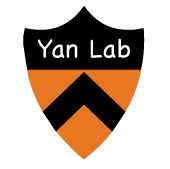Molecular determinants for the thermodynamic and functional divergence of uniporter GLUT1 and proton symporter XylE
Type
GLUT1 facilitates the down-gradient translocation of D-glucose across cell membrane in mammals. XylE, an Escherichia coli homolog of GLUT1, utilizes proton gradient as an energy source to drive uphill D-xylose transport. Previous studies of XylE and GLUT1 suggest that the variation between an acidic residue (Asp27 in XylE) and a neutral one (Asn29 in GLUT1) is a key element for their mechanistic divergence. In this work, we combined computational and biochemical approaches to investigate the mechanism of proton coupling by XylE and the functional divergence between GLUT1 and XylE. Using molecular dynamics simulations, we evaluated the free energy profiles of the transition between inward- and outward-facing conformations for the apo proteins. Our results revealed the correlation between the protonation state and conformational preference in XylE, which is supported by the crystal structures. In addition, our simulations suggested a thermodynamic difference between XylE and GLUT1 that cannot be explained by the single residue variation at the protonation site. To understand the molecular basis, we applied Bayesian network models to analyze the alteration in the architecture of the hydrogen bond networks during conformational transition. The models and subsequent experimental validation suggest that multiple residue substitutions are required to produce the thermodynamic and functional distinction between XylE and GLUT1. Despite the lack of simulation studies with substrates, these computational and biochemical characterizations provide unprecedented insight into the mechanistic difference between proton symporters and uniporters.

